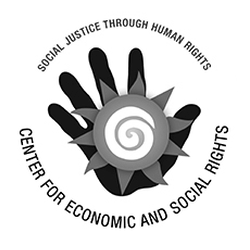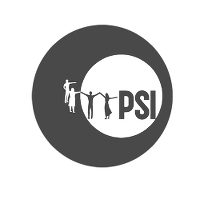By Stefano Prato, Society for International Development [fn]This article draws and further builds on the author’s editorial, ‘Resisting Rural Appropriation: Embracing agroecology to transform globalization’, SID Development Journal on ‘Rural Transformations’, vol. 58: 2-3.[/fn]
SDG 2: “End hunger, achieve food security and improved nutrition and promote sustainable agriculture”, articulates one of the highest aspirations of the 2030 Agenda. Alongside SDG 1 on ending poverty in all of its forms, it also provides for much of the pathos and ethos that drives implementation. At the cost of being reductive, failure to advance SDGs 1 and 2 would signal the impending doom of the entire agenda. However, while nobody can disagree with the noble objective embraced by SDG 2, its pursuit might be masking less benign forces at play. The implementation of SDG 2 takes place within the struggle between two alternative visions of food and nutrition: a model of large-scale industrial agriculture that aims to maximize short-term productivity based on technical solutions, and a vision of small-scale sustainable farming and agroecology based on the fundamental human right to adequate food and nutrition.
Tension between two extremes
The context in which SDG 2 is being implemented is the battlefield of two opposing worldviews on modernity and food and nutrition, which are supported by two equally distant production, marketing and distribution systems.
On one side, the corporate model that views food as commodity and aims to conquer consumers’ markets, where consumers are identified merely as individuals with purchasing power. It views production as a highly-specialized process that can be delocalized anywhere the resources to maximize narrowly-defined productivity can be found. It is based on the privatization of the commons, and increasingly on its financialization, as well as extensive use of biotechnologies, including genetically modified organisms (GMOs). Its uniformed products are horizontally and vertically integrated in global value chains and its business model is based on minimizing the externalities it is obliged to cater to while seeking the lowest possible labour intensity by applying mechanization, robotics and information technologies. This homogenizing and hegemonic model is leading the capture of agriculture and nutrition by large-scale and intensive industrial production, vertically integrated with industrial food transformation, with large distribution channels that allow increasing penetration of global markets up until rural communities.
The main players in this model are huge transnational conglomerates undergoing an unprecedented process of corporate concentration. In December 2016, Monsanto shareholders voted in favour of the sale of the company to Bayer for US$ 66 billion, making one of the largest-ever foreign corporate takeovers. The merged entity will be the world’s largest supplier by sales of both seeds and pesticides, controlling up to 30 percent of the world’s commercial seed markets and 24 percent of the world’s pesticide markets. As reported by the ETC Group (see Box), the Bayer-Monsanto merger is just one of several mega-mergers taking place simultaneously in agricultural input supply: US chemical giants Dow Chemical and DuPont are set to merge, and China National Chemical Corporation (ChemChina) is to acquire Syngenta.
On the other end of the spectrum are local community responses based on small-scale production, unfortunately often trapped into subsistence farming, which view food as a fundamental human right and regard food consumers as fellow citizens and rights-holders. [fn]Valente (2014).[/fn] As stated by the civil society declaration to the Second International Conference on Nutrition in November 2014:
“It is our common understanding that food is the expression of values, cultures, social relations and people’s self-determination, and that the act of feeding oneself and others embodies our sovereignty, ownership and empowerment. When nourishing oneself and eating with one’s family, friends, and community, we reaffirm our cultural identities, our ownership over our life course and our human dignity.” [fn]www.fao.org/fileadmin/user_upload/faoweb/ICN2/documents/CSO_Vision_Statement_-_Final.pdf. [/fn]
This approach views production as a highly-diversified process which is inherently localized and integrated with territorial needs, traditions and ecosystems. It is based on traditional and locally-adapted genetic resources, minimal external input and a holistic concept of productivity, which maximizes synergies among a wide variety of product lines, through crop rotation and mixed crop-livestock systems. It is inherently labour intensive and biocentric, as minimizing externalities and enhancing biodiversity means preserving the ecosystem where communities are located and on which their future livelihood depends. It is also based on collective rights and access to the commons and is supported by a vast array of knowledge(s), including traditional and indigenous knowledge. In this respect, a growing number of small-scale food producers are engaging in agroecology and exploring short-chain and circular economies with their surrounding territories. The main players here are small farmers, fishers, pastoralists and other small-scale food producers, which are increasingly connected into national, regional and global social movements, one notable example being La Via Campesina. As stated in La Via Campesina’s website:
“La Via Campesina is the international movement which brings together millions of peasants, small and medium-size farmers, landless people, women farmers, indigenous people, migrants and agricultural workers from around the world. It defends small-scale sustainable agriculture as a way to promote social justice and dignity. It strongly opposes corporate driven agriculture and transnational companies that are destroying people and nature. La Via Campesina comprises about 164 local and national organizations in 73 countries from Africa, Asia, Europe and the Americas. Altogether, it represents about 200 million farmers. It is an autonomous, pluralist and multicultural movement, independent from any political, economic or other type of affiliation.” [fn]https://viacampesina.org/en/index.php/organisation-mainmenu-44/what-is-la-via-campesina-mainmenu-45…. [/fn]
It must also be noted that various attempts are currently underway to reduce agroecology to one production technique among many. These must be rejected. As stated in the 2015 Declaration of the International Forum for Agroecology, [fn]International Forum for Agroecology (2015).[/fn] “agroecology is a way of life” that encompasses pervasive philosophies and concrete alternatives that encompass production practices based on ecological principles and the dynamic management of biodiversity as well as profound rethinking of social and governance relations within and between territories. It is therefore inherently political as it challenges and aims to transform power structures.
This dichotomy might appear unnecessarily simplistic, as there would seem to be much in between these two extremes. But, in reality, there is not. Many middle-sized companies are being increasingly squeezed by the current patterns within the sector. The middle-sized enterprise is increasingly becoming a missing middle, not only in Southern countries where it never existed but also in Europe, where some industries, such as the dairy industry, have been under dramatic stress over the past years.
Furthermore, any benign pretence that these two alternative visions of life, production and markets can cohabit is debunked daily by the evidence of the predatory nature of the industrial system, with its continued grabbing of land, water and genetic resources, and its profound impact on urban consumers and their dietary preferences.
The pursuit of SDG 2 should therefore be located within this ongoing struggle in order to assess the extent to which the 2030 Agenda promotes a bottom-up approach, which is fully consistent with its claimed human rights framing and the social, economic and environmental imperatives it embodies, or rather offers a narrative and political process that facilitates the corporate capture of agriculture and nutrition.
Four biased narratives
The tension between these opposing systems is proving to be an uneven battle, despite the powerful simplicity with which agroecology and small-scale food production can simultaneously provide for livelihoods, environmental sustainability and health diets. Indeed, four biased narratives are currently at play in the implementation of SDG 2 in an effort to subvert such linear simplicity.
First, the grand narrative of the crisis of feeding the planet and the need to boost production and productivity with significant investments in agribusiness, despite the reality that smallholders currently supply up to 70 percent of overall food production. [fn]Civil Society Mechanism for relations with the UN Committee on World Food Security (2016).[/fn] Furthermore, according to the Save Food Initiative of the Food and Agriculture Organization (FAO), every year around the globe, 1.3 billion tonnes of food are lost or wasted – that is one third of all food produced for human consumption. [fn]FAO (2016).[/fn] The countries of the global North waste almost as much food as the entire net food production of sub-Saharan Africa on annual basis and the amount of food lost and wasted every year is equal to more than half of the world’s annual cereal harvest.
The second biased narrative is related to the climate challenge and the pressure for agriculture to adapt to it through technological, and often biotechnological, solutions. The July 2016 report of the High-Level Panel of Experts (HLPE) of the Committee on World Food Security (CFS) states that the livestock sector alone, as a driver of deforestation, demand for feed, and transportation and processing infrastructure, is directly and indirectly responsible for 14.5 percent of greenhouse gas (GHG) emissions. [fn]HLPE (2016).[/fn] Together, permanent meadows, pastures and land dedicated to the production of feed thus represent 80 percent of total agricultural land. Against the evident need for de-intensification, the narrative uses, abuses and ultimately corrupts the concept of sustainability to justify the unjustifiable: the obvious conundrums of sustainable intensification and technology-driven climate smart-agricultures become the new Trojan horses to propose biotechnologies that allows the continued expansion of the industrial agriculture that is itself the origin of the biodiversity loss and the climate implications that these false solutions claim to address.
The third and most recent narrative concerns the push for nutrition-sensitive agriculture, which instrumentalizes old and emerging nutritional challenges to propose food fortification, including bio-fortification. Rather than promoting diversified diets based on agro-biodiversity, this narrative fails to recognize that nutritional deficits inevitably result from increasingly homogenous diets largely composed of industrial products based on large-scale agricultural production of very few crops. It is the reduction of biodiversity and nutritional food content that is inherently consequent to the industrial system that generates the nutritional deficiencies that are claimed to require food fortification. The industrial system claims to offer food fortification as the solution to a problem it has itself generated and, by doing so, it continues to squeeze and erode local food systems that rather offer deeply rooted solutions based on agro-biodiversity.
The fourth and last narrative is the mirage of structural transformation that calls for people to move out of agriculture and engage in better paid industrial and service-based employment. It is too bad that these jobs only exist in fiction. The pattern of structural transformation that characterized past experiences of industrialization does not seem to be replicable by today’s commodity trapped economies. Established productive capacities and increasingly mono-directional trade liberalization is generating new patterns of de-industrialization and premature tertiarization of developing economies, particularly within the African continent, that fall dramatically short of the claimed employment expectations. To this, we also need to factor in the radically different extent of labour intensity that new productive technologies, including the extensive application of robotics, are fast tracking globally.
Implications for the rural agenda and the political economy of SDG 2 implementation
In many ways, the rural space is – many would say continues to be – the battlefield among these opposing views of modernity, spanning across ways of life, social and political relations, organization of production and relationship with our ecology.
The fact remains that rural areas are too often affected by unacceptable levels of human suffering and deprivation. However, the same can now be said for the peri-urban and even urban space. Hence, there is the need to overcome a stereotyped view of rural backwardness versus urban modernity. Many urban/rural analyses are still based on comparing average statistics between these two spaces, constructing the false notion of an average urban citizen that does not exist in reality. There is also no doubt the impact of significant rural-urban migrations and the continued advancement of urbanization and most frequently ‘metropolization’. However, the pull and push factors of these massive movements should be better analysed before considering them as a de-facto reality. Nevertheless, urban poverty and marginalization are as rapidly on the rise as the expectations for better-paid, non-farm urban jobs are revealing their untenable foundations.
Demystifying stereotypes of rural backwardness is therefore the first conceptual step that allows for the emergence of new visions for the rural space which can lay the foundations for progress within SDGs 1 and 2. In this respect, one often has the impression that the ‘rural’ is considered as the primitive version of the ‘urban’ in an underdeveloped context, almost as development moves linearly from the rural to the urban reality. Indeed, the concept of rural modernity might be considered an oxymoron by many within global policy circles. But this is exactly where a significant part of the rural transformation narrative problem resides. This narrative is largely shaped away from the rural spaces themselves with limited, if any, participation by the primary subjects that would need to design and drive any local transformative process. In fact, the narrative often contrasts and contradicts the alternative visions that communities may have of their possible development trajectories.
In this context, the four biased narratives mentioned above influence to varying degrees the current conceptualizations of rural transformation processes within the 2030 Agenda, and SDGs 1 and 2 more particularly. Their net impact generated a concrete risk that the rural transformation agenda may be driven more by the hegemonic and homogenizing global food system than by rural communities, including smallholders, pastoralists and other peasants. Indeed, the combined effect of such agency fallacy with the biased narratives means that the paradigm of rural transformation may risk becoming yet another instrument of rural appropriation, further advancing the tremendous and continuing rise in intensive industrial agriculture and its rapid consolidation globally, and augmenting the continued process of economic and political concentration in few hands. The result of this ongoing process is the dramatic shrinking of the space for small-scale food producers and the generation extensive disempowerment of both producers and workers. This is where the blindness of conventional poverty analyses to the dynamics of accumulation and concentration of wealth is instrumental to the capture of power by the ruling elites. [fn]Prato (2014).[/fn]
It is therefore unsurprising that limited progress can be reported on each of the three SDG 2-specific targets on means of implementation. With regard to 2.a to increase investment in rural agriculture, the capacity to scale-up public investments, the only kind that can possibly strengthen small-scale sustainable agriculture, is significantly constrained by lack of tangible progress in addressing the bleeding of potential tax revenues caused by illicit financial flows and the concomitant stagnation of official development assistance (ODA). In terms of correcting and preventing trade restrictions, called for in target 2.b, the Doha Development Round it refers to is currently moribund, which reaffirms the fallacy of expecting the WTO, with its power imbalances, to address the trade and development question in any meaningful manner. And with regard to reforming food commodity markets, called for in target 2.c, no significant political efforts seem to be on the radar screen to seriously address the financial drivers of commodity price volatility within derivative markets. Interestingly, this was completely off the agenda of the recently held 2017 ECOSOC Forum on Financing for Development Follow-up, which is also mandated to monitor the progress with respect to the Means of Implementation of the 2030 Agenda.
Important role of the CFS
Rather than simple monitoring of progress, the nature of the tensions related to the pursuit of SDG 2 requires active policy convergence and coordination. Many challenge the notion that this can happen in the context of the High-Level Political Forum (HLPF) process alone. Following the principle of subsidiarity and given the active participation of small-scale food producers in its process, the Committee on World Food Security (CFS) offers the most suitable locus where these tensions could be addressed and possibly resolved in the context of the Global Strategic Framework for Food Security and Nutrition.
The CFS constitutes, according to its 2009 Reform Document “the foremost inclusive international and intergovernmental platform for a broad range of committed stakeholders to work together in a coordinated manner and in support of country-led processes towards the elimination of hunger and ensuring food security and nutrition for all human beings.” [fn]www.fao.org/cfs/workingspace/workstreams/oewggsf/onlinegsf/gsfsec1/en/. [/fn] Indeed, its Voluntary Guidelines on the Responsible Governance of Tenure of Land, Fisheries and Forests in the Context of National Food Security, [fn]Committee on World Food Security (2012).[/fn] adopted in 2012, and its Framework for Action for Food Security and Nutrition in Protracted Crisis, [fn]Committee on World Food Security (2015).[/fn] agreed in 2015, are two valid examples of critical policy guidelines that can guide and assist national processes from a rights-based perspective.
Conclusion
The 2030 Agenda with its goal on food security is seen by some as a conceptual framework deployed to sideline the centrality of the right to adequate food and nutrition and the visions of agroecology and food sovereignty embraced by peasants and their social movements. Others, however, indulge in a more benign reading of the new development framework and hope that it will be helpful in advancing a positive rural agenda.
Alternative pathways to confront the current mix of complex challenges are clear. Present food systems are dysfunctional because they result in unhealthy diets, unsustainable footprints and impoverishments of small-scale producers. They are the outcome of a supply-driven and macroeconomic approach to commodified food. The alternatives are based on locally rooted and driven processes that promote agroecological diversification and food sovereignty. This calls for public investments and supporting policies for those that are already feeding the world in ways that can increasingly protect and enhance biodiversity, heal our planet, promote healthy and diversified diets based on traditional and resilient crops, and strengthen local territorial markets and circular economies. In this respect, the rural space can be seen as the last bastion of resistance against the hegemonic and hegemonizing global economy that is increasing de-materializing and de-humanizing the experience of life. But it is not only about resistance. It is also a dynamic space of re-invention of production and social relations and a vibrant laboratory for experimentation with new solutions that can transform our lives and redress our current challenges into precious opportunities to rediscover the knowledges, identities and traditions that have made our common humanity.
Stefano Prato is Managing Director of the Society for International Development (SID).
Civil Society Mechanism for relations with the UN Committee on World Food Security (2016): Connecting Smallholders to Market – An Analytical Guide. Rome: FAO.
www.csm4cfs.org/wp-content/uploads/2016/10/English-CONNECTING-SMALLHOLDERS-TO-MARKETS.pdf
Committee on World Food Security (2015): Framework for Action for Food Security and Nutrition in Protracted Crisis. Rome: FAO.
www.fao.org/fileadmin/templates/cfs/Docs1415/FFA/CFS_FFA_Final_Draft_Ver2_EN.pdf
Committee on World Food Security (2012): Voluntary guidelines on the responsible governance of tenure of land, fisheries and forests in the context of national food security. Rome: FAO.
www.fao.org/docrep/016/i2801e/i2801e.pdf
International Forum for Agroecology (2015): Declaration of the International Forum for Agroecology, Nyéléni, Mali.
www.foodsovereignty.org/forum-agroecology-nyeleni-2015/
FAO (2016): Save Food: Global Initiative on Food Loss and Waste Reduction. Rome.
www.fao.org/save-food/en/
HLPE (2016): Sustainable agricultural development for food security and nutrition: what roles for livestock? A report by the High-Level Panel of Experts on Food Security and Nutrition of the Committee on World Food Security. Rome.
www.fao.org/3/a-i5795e.pdf
IPES Food (2016): From uniformity to diversity: a paradigm shift from industrial agriculture to diversified agroecological systems. International Panel of Experts on Sustainable Food Systems.
www.ipes-food.org/images/Reports/UniformityToDiversity_FullReport.pdf
Prato, Stefano (2015): Editorial: Resisting Rural Appropriation: Embracing agroecology to transform globalization. In: Development 58:2-3, pp. 155-158.
Prato, Stefano (2014): Editorial: The Struggle for Equity: Rights, food sovereignty and the rethinking of modernity. In: Development 57:3-4, pp. 311-319.
Valente, Flavio (2014): Towards the Full Realization of the Human Right to Adequate Food and Nutrition. In: Development 57:2, pp. 155-170.








